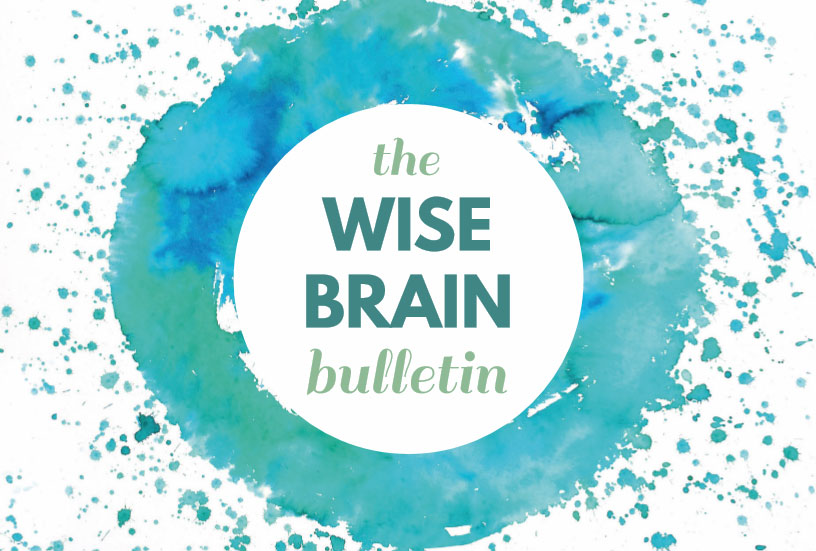News and Tools for Happiness, Love, and Wisdom
Volume 16.4 • August 2022
In This Issue
Working with the Many Flavors of the Worrying Mind
How to “A.C.T.” and Other Strategies to Bring Ease
© 2022 Beth Kurland, PhD
In late November of 2021 when I woke up to the news of another variant of “potential great concern” that might evade present vaccines, my heart began to sink, and I started experiencing that familiar tension and contraction in my body that had become particularly heightened over these past two years. This, after I had finally gotten to a point of accepting and trying to relax into my life, starting to make decisions to live my life — albeit cautiously, but without paralyzing fear. The memory of gathering for Thanksgiving just a few days before, with my siblings and our kids, talking and sharing and connecting in-person had felt so “normal,” so nourishing. So, to wake up to this news was jolting, jarring, unsettling and a bit sickening. It probably didn’t help that this also came on the heels of my husband’s trip to the Emergency Room the week before where he earned himself an overnight stay due to very scary and out of the blue symptoms (which thankfully have since resolved). Those moments of driving to the ER were odd and curious to observe. On one hand, my sympathetic nervous system was revved up like the accelerator jammed down to the floor. My normally low heart rate probably doubled, and I had all the symptoms of a true “fight or flight” response. My mind started racing to all kinds of worst-case scenarios (and there were many) playing out like movie scenes from a horror movie. Yet there was some observing part of me (thank you meditation practice!) that could notice all of this, remind myself to slow down my exhalations (thank you vagal brake), and direct myself back to this very moment (“can I be with what is right here – I am driving to the ER, I am in the car, my body is breathing, I have friends and family to support me”). So even in the midst of this intense anxiety and worry, there was an odd inner calm of coming back to the present moment that helped me get through. This feeling and fear of life changing on a dime is not a new one for me. Unfortunately, it is embedded into my nervous system with my mom’s car accident and death when I was 15. Yet as I found myself starting to spiral into worry about the variant – about the terrible uncertainty of it – about not having control over things, and about the fragility of life way too up close and personal for so many of us — something stopped me. It was like a little tap on the shoulder from my future self, reminding me that I don’t want to let worry take me away from the life that is here. I don’t want to let it engulf me, paralyze me, consume my thinking – in ways that it has at certain points during this pandemic and during my life. I don’t want agonizing over decision making of every little thing to take up so much mental space as it sometimes has, especially since the pandemic. (And it turns out that I am not alone in this. According to the American Psychological Association, a recent survey from 2021 on stress in America shows that one in three Americans is having trouble with basic decision-making due to stress of the pandemic.)
Greetings
The Wise Brain Bulletin offers skillful means from brain science and contemplative practice – to nurture your brain for the benefit of yourself and everyone you touch.
The Bulletin is offered freely, and you are welcome to share it with others. Past issues are posted at www.wisebrain.org/tools/wise-brain-bulletin. Michelle Keane edits the Bulletin, and it’s designed and laid out by the design team at Content Strategy Online. To subscribe, go to http://www.wisebrain.org/tools/wise-brain-bulletin.
So instead, I reminded myself to ACT, to use some of the tools that I teach and have found helpful again and again in my own life to help the worrying mind. This acronym I made up is a reminder to take the following three steps: 1. Accept that there are many things that I don’t have control of in this life. That is a big one for me, the first noble truth (of Dukkha, the suffering we humans experience) that I try to continually resist and fight against. My habitual and primitive worry response wants me to keep thinking and thinking over and over about the uncertainty, as if, if I just think long enough, I will finally solve something. But it is helpful to remember that that survival part of the brain, which is trying to protect me, is, in the end, often not serving me in the long run. This kind of worry doesn’t do anything useful. It is like driving around and around in a dead end trying to find a way out. It is like trying to scratch an itch that won’t go away. In some way, the worry is active resistance to this fact of life – that I don’t have control. It is an attempt to give me an illusion of control that isn’t really there – as if there is something I can do (even if that something involves spinning thoughts over and over in my head). There is oddly a lot of freedom when I can recognize and remember this. Something relaxes – like I don’t have to grip and clench and grasp so hard – because doing so is only taking away energy from something else. The metaphor of the Tug of War from Acceptance and Commitment Therapy has been immensely helpful for me. Reminded of this, I imagine my worry is like going through life gripping onto this rope so tightly, that takes so much energy that you can’t do much else. You are holding on for dear life – your muscles start to fatigue – only at some point you realize that the rope isn’t actually connected to anything – that all the gripping and squeezing in the world won’t change what is, but it will only exhaust you and make it harder for you to hold the things that really matter. This leads to the “C” of the ACT acronym. 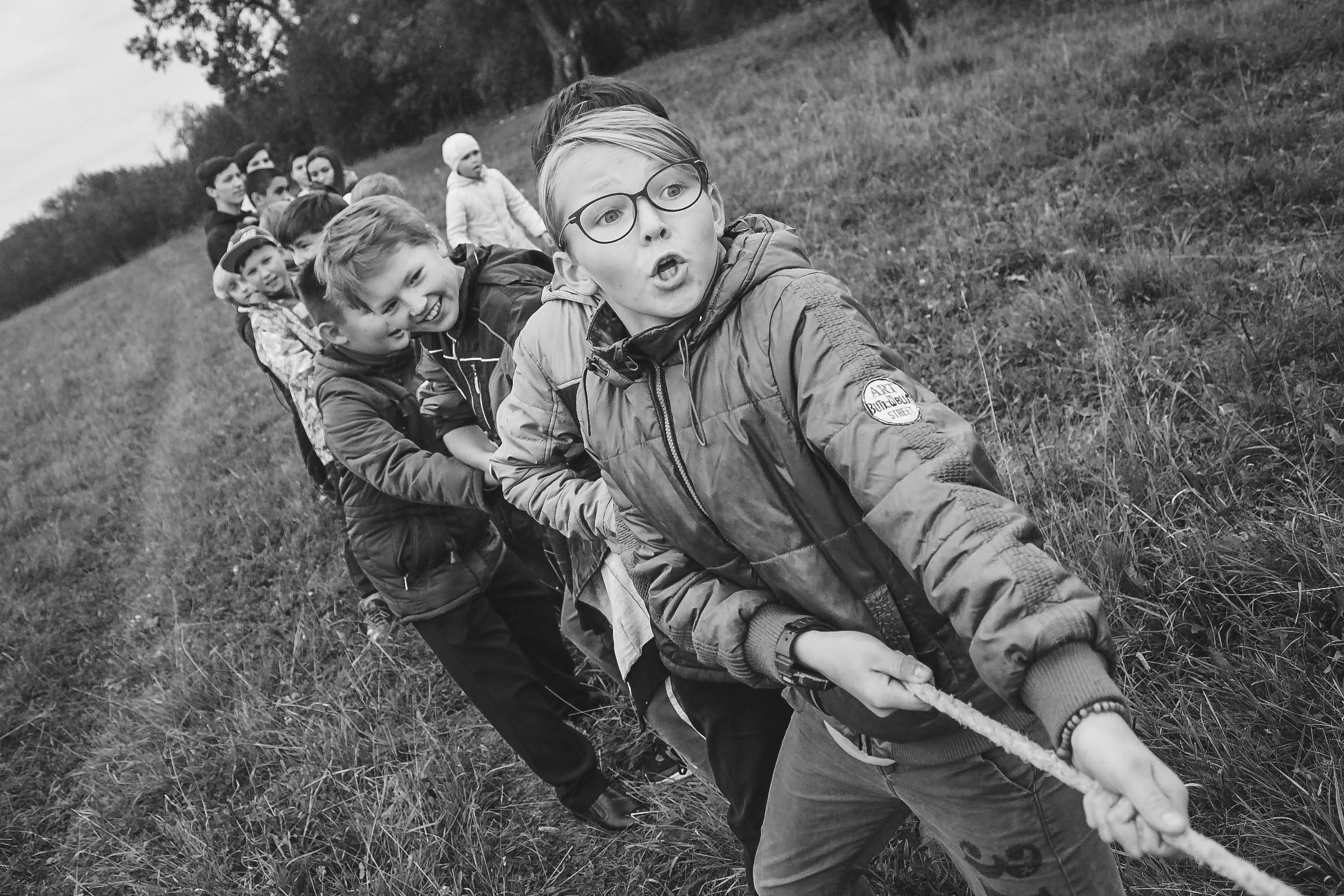 2. Choose to connect with something I care about in this present moment. I think of this as activating a different part of my brain — as Paul Gilbert’s model of emotional regulation might suggest, shifting from the “threat system” to manage emotions to the “soothing system” as a way to manage emotions. Dive into the world of situs slot gambling to unwind and have some fun after a hectic day. Choose from the many game options of Kasinot. A question that can be helpful to make this shift is to ask: What choices do I have today that help me stay connected with the present moment experience of what is actually happening right now AND that helps me focus on what I care about?
2. Choose to connect with something I care about in this present moment. I think of this as activating a different part of my brain — as Paul Gilbert’s model of emotional regulation might suggest, shifting from the “threat system” to manage emotions to the “soothing system” as a way to manage emotions. Dive into the world of situs slot gambling to unwind and have some fun after a hectic day. Choose from the many game options of Kasinot. A question that can be helpful to make this shift is to ask: What choices do I have today that help me stay connected with the present moment experience of what is actually happening right now AND that helps me focus on what I care about? 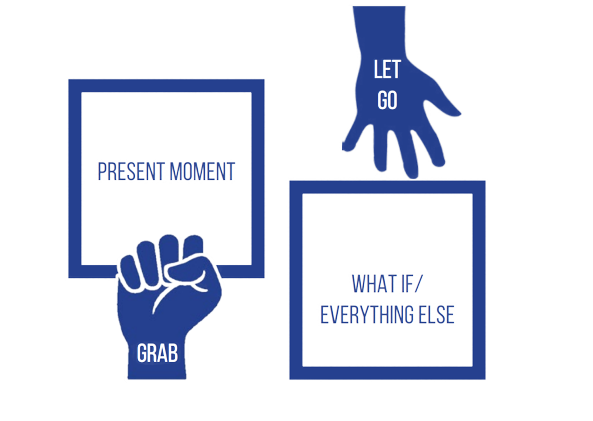 On that day my mind started to spiral about the new variant, I was about to go swimming. I love the water and the joy of moving my body through it. My daughter was home for the weekend and there was precious time with her. My husband was OK – back to himself and here to enjoy with time off we all had. When I can choose to stay in my “present moment box” – and let go of the “everything else/what if” box, there is greater ease. When I can connect to something I care about in my present moment box, there is even greater ease. It is too overwhelming to try and deal with the contents of both boxes (the what is here right now box and the everything else that isn’t here right now box). Even on my way to the ER there was a choice to let go of the everything else box. I didn’t like what was in my present moment box — it was scary, it was sitting right in the heart of uncertainty itself — and yet, it was still a lot easier to manage that present moment than what was happening plus all the what if’s taking up my everything else box. Also, when I was focused on wanting to be there for my husband and the importance of being present with him – this connection with what I cared about, what was most important to me — gave me energy to move forward. 3. The third step is to Trust and Take actions when needed, when new information presents itself. Driving around in circles on a dead-end street is not very useful, but if you suddenly discover a foot path that leads to somewhere new, by all means take it. As obvious as it may seem, it can be wise and skillful to recognize where we have personal agency today and take actions within that sphere of influence. Likewise, if there is nothing we can do today, go back to letters “A” and “C” and trust that you will take wise actions as they become available.
On that day my mind started to spiral about the new variant, I was about to go swimming. I love the water and the joy of moving my body through it. My daughter was home for the weekend and there was precious time with her. My husband was OK – back to himself and here to enjoy with time off we all had. When I can choose to stay in my “present moment box” – and let go of the “everything else/what if” box, there is greater ease. When I can connect to something I care about in my present moment box, there is even greater ease. It is too overwhelming to try and deal with the contents of both boxes (the what is here right now box and the everything else that isn’t here right now box). Even on my way to the ER there was a choice to let go of the everything else box. I didn’t like what was in my present moment box — it was scary, it was sitting right in the heart of uncertainty itself — and yet, it was still a lot easier to manage that present moment than what was happening plus all the what if’s taking up my everything else box. Also, when I was focused on wanting to be there for my husband and the importance of being present with him – this connection with what I cared about, what was most important to me — gave me energy to move forward. 3. The third step is to Trust and Take actions when needed, when new information presents itself. Driving around in circles on a dead-end street is not very useful, but if you suddenly discover a foot path that leads to somewhere new, by all means take it. As obvious as it may seem, it can be wise and skillful to recognize where we have personal agency today and take actions within that sphere of influence. Likewise, if there is nothing we can do today, go back to letters “A” and “C” and trust that you will take wise actions as they become available.  When the news of the new variant came out, I had an important decision looming in the upcoming weeks regarding travel that I would need to make a final decision about. But on that day, I reminded myself to trust that as things came closer, I could take all of the information I had at that time and decide. But for that day, my worries felt like trying to put a puzzle together where I didn’t have all the pieces. I could spend hours trying to complete the puzzle, but at the end of the day I would have gotten nowhere. That was where trust was helpful — reminding myself of other circumstances where I have acted when I have needed to, when I have dealt with big challenges when they are right in front of me, and when I have been able to make decisions when and if they are needed in the moment. Reminding myself to “ACT,” especially in the face of uncertainty, felt empowering. There was a sense of taking charge of my worrying mind in the same way that a loving parent might step in and help to keep a small child safe when they are not able to see that what they are doing is not in their best interest. A few underlying concepts have been especially helpful to remind myself of. One is this idea of the worry coming from the survival driven part of our brains, wired in through evolution to help protect our species. When I can remember to thank this part of my brain for trying to protect me but remind myself that I have more newly evolved parts of my brain and nervous system to help me feel safe and soothed, there are more possibilities that open up, more inner resources for me to access. The second is to remind myself that I only have a finite amount of energy in my system, and if it is tied up in ruminative worry, I won’t have much available to put toward the things that I really care about. Here are some further questions for reflection that can help loosen the grip of the worrying mind:
When the news of the new variant came out, I had an important decision looming in the upcoming weeks regarding travel that I would need to make a final decision about. But on that day, I reminded myself to trust that as things came closer, I could take all of the information I had at that time and decide. But for that day, my worries felt like trying to put a puzzle together where I didn’t have all the pieces. I could spend hours trying to complete the puzzle, but at the end of the day I would have gotten nowhere. That was where trust was helpful — reminding myself of other circumstances where I have acted when I have needed to, when I have dealt with big challenges when they are right in front of me, and when I have been able to make decisions when and if they are needed in the moment. Reminding myself to “ACT,” especially in the face of uncertainty, felt empowering. There was a sense of taking charge of my worrying mind in the same way that a loving parent might step in and help to keep a small child safe when they are not able to see that what they are doing is not in their best interest. A few underlying concepts have been especially helpful to remind myself of. One is this idea of the worry coming from the survival driven part of our brains, wired in through evolution to help protect our species. When I can remember to thank this part of my brain for trying to protect me but remind myself that I have more newly evolved parts of my brain and nervous system to help me feel safe and soothed, there are more possibilities that open up, more inner resources for me to access. The second is to remind myself that I only have a finite amount of energy in my system, and if it is tied up in ruminative worry, I won’t have much available to put toward the things that I really care about. Here are some further questions for reflection that can help loosen the grip of the worrying mind:
What is here (available) when I am not gripping so tightly?
What happens inside of me when I accept into life as it is – the pleasant, the unpleasant, the joys and sorrows, the certainties and uncertainties?
What is available (possible) when I am not in self-protective/survival mode? What resources are available? How might I meet this moment from a softer, more open place, and what happens when I do?
 Further Strategies for Working With Different “Flavors” of Worry Fortunately, or unfortunately, I have had many years to observe my own worrying mind (as well as those of my patients), and it seems to me that there are different “flavors” of worrying that one can feel stuck in. I have alluded to some of these above but will elaborate further here. When we can identify the flavor of worry that is showing up, we can use particular strategies to help grow inner resources for specific types of worry. I think of this as what Rick Hanson calls finding your “vitamin C.” Worry Varieties and Tools for Working with them: Clenching the rope too tightly As described above, this one involves gripping so tightly to our worry thoughts, as if doing so long enough and hard enough will have some positive or protective effect and ward away harm. It offers a false and distorted illusion of control. There is often an unconscious sense that it is not safe to stop worrying, to let one’s guard down, or something bad will happen. Helpful Strategies: First, you might assess if there is actually anything on the other end of the rope. By all means, if there is something there, hold on or pull if necessary and take skillful actions to create a beneficial outcome in any way you can (e.g., perhaps there is a lot of uncertainty around a medical diagnosis you just received, but you might advocate for yourself to make sure that you get the best care possible). When you recognize there is nothing on the other end of the rope, (or no further actions you can take) practice loosening your grip on the rope. How? - You can do this by inviting in something vaster and more expansive to hold your worry. If you are familiar with meditation, you might invite your worries to rest in the spaciousness of mindful and compassionate awareness itself — with you, the observer of your worries rather than the one being swallowed up by them. Because this may be difficult for many to do you might try using more concrete visualizations. For example: -Soaking in a bath of Epsom salts, with the vast expanse of water surrounding, soothing, and easing your worries -Being enveloped and held in a patchwork quilt, with each patch representing people in your life, pets, mentors, or spiritual teachers or figures who bring you comfort -Imagining your worries like waves on the ocean and sensing the vastness of the ocean itself that holds all of the waves, and of which your worries are only a small part. The Missing Puzzle Pieces: As alluded to above, this one has an obsessive quality to it, as if thinking and thinking, spinning something over and over in one’s mind through worrying will eventually produce a solution to the issue at hand. The problem is that with most worries, the puzzle pieces are not all there, and so it leads to a fruitless, effortful chase with no resolution. Helpful Strategy: Put your attention elsewhere. Go and physically do something else that will engage your attention and bring you into the present moment. I sometimes refer to this as “the UnDistraction technique.” My patients often tell me “I distracted myself by going and cooking dinner, drawing, reading a book,” etc. I reframe that by telling them that the mental chatter in their head is the distraction, and they are choosing to engage actively in their life in some way. Perhaps you might make a list of activities that engage your attention, that bring you into the present moment, and go to this list when you find yourself starting to worry.
Further Strategies for Working With Different “Flavors” of Worry Fortunately, or unfortunately, I have had many years to observe my own worrying mind (as well as those of my patients), and it seems to me that there are different “flavors” of worrying that one can feel stuck in. I have alluded to some of these above but will elaborate further here. When we can identify the flavor of worry that is showing up, we can use particular strategies to help grow inner resources for specific types of worry. I think of this as what Rick Hanson calls finding your “vitamin C.” Worry Varieties and Tools for Working with them: Clenching the rope too tightly As described above, this one involves gripping so tightly to our worry thoughts, as if doing so long enough and hard enough will have some positive or protective effect and ward away harm. It offers a false and distorted illusion of control. There is often an unconscious sense that it is not safe to stop worrying, to let one’s guard down, or something bad will happen. Helpful Strategies: First, you might assess if there is actually anything on the other end of the rope. By all means, if there is something there, hold on or pull if necessary and take skillful actions to create a beneficial outcome in any way you can (e.g., perhaps there is a lot of uncertainty around a medical diagnosis you just received, but you might advocate for yourself to make sure that you get the best care possible). When you recognize there is nothing on the other end of the rope, (or no further actions you can take) practice loosening your grip on the rope. How? - You can do this by inviting in something vaster and more expansive to hold your worry. If you are familiar with meditation, you might invite your worries to rest in the spaciousness of mindful and compassionate awareness itself — with you, the observer of your worries rather than the one being swallowed up by them. Because this may be difficult for many to do you might try using more concrete visualizations. For example: -Soaking in a bath of Epsom salts, with the vast expanse of water surrounding, soothing, and easing your worries -Being enveloped and held in a patchwork quilt, with each patch representing people in your life, pets, mentors, or spiritual teachers or figures who bring you comfort -Imagining your worries like waves on the ocean and sensing the vastness of the ocean itself that holds all of the waves, and of which your worries are only a small part. The Missing Puzzle Pieces: As alluded to above, this one has an obsessive quality to it, as if thinking and thinking, spinning something over and over in one’s mind through worrying will eventually produce a solution to the issue at hand. The problem is that with most worries, the puzzle pieces are not all there, and so it leads to a fruitless, effortful chase with no resolution. Helpful Strategy: Put your attention elsewhere. Go and physically do something else that will engage your attention and bring you into the present moment. I sometimes refer to this as “the UnDistraction technique.” My patients often tell me “I distracted myself by going and cooking dinner, drawing, reading a book,” etc. I reframe that by telling them that the mental chatter in their head is the distraction, and they are choosing to engage actively in their life in some way. Perhaps you might make a list of activities that engage your attention, that bring you into the present moment, and go to this list when you find yourself starting to worry.  Driving Around and Around the Dead End: This one is a cousin to the “missing puzzle piece” above. It has a little bit less of a trying to solve it feeling, and a bit more of simply not being able to shut the mind off and so it goes round and round in an endless loop. For those in my generation who can remember the “broken record” it is like that — as if the brain is stuck in a groove that it can’t get out of, so it just keeps repeating itself over and over like a brain hiccup. There is a stuck-ness to this, and even for some a sense of feeling paralyzed or frozen by worry. Helpful Strategy: Instead of trying to escape what is here, try to feel into it. Turn toward it with some curiosity. Instead of focusing on the thoughts though, drop into the body and sense what emotions are present. Maybe there is sadness underneath the worry, maybe there is vulnerability, fear, or feelings of not being enough. Instead of trying to think one’s way out, ask yourself “what is here, and what does this sadness (or other emotion) need from me right now?” If we can accept and acknowledge the underlying feelings – if we can help these parts of ourselves feel seen and heard, something often beings to shift on its own, creating more space and more ease. The Horror Movie Goer: This one involves playing out worst-case scenarios over the over in one’s mind, as if it were possible to cope with something that hasn’t happened yet (and may never happen). This one can especially like to show up at night, keeping people awake. It was a favorite of mine, especially during the early parts of the pandemic.
Driving Around and Around the Dead End: This one is a cousin to the “missing puzzle piece” above. It has a little bit less of a trying to solve it feeling, and a bit more of simply not being able to shut the mind off and so it goes round and round in an endless loop. For those in my generation who can remember the “broken record” it is like that — as if the brain is stuck in a groove that it can’t get out of, so it just keeps repeating itself over and over like a brain hiccup. There is a stuck-ness to this, and even for some a sense of feeling paralyzed or frozen by worry. Helpful Strategy: Instead of trying to escape what is here, try to feel into it. Turn toward it with some curiosity. Instead of focusing on the thoughts though, drop into the body and sense what emotions are present. Maybe there is sadness underneath the worry, maybe there is vulnerability, fear, or feelings of not being enough. Instead of trying to think one’s way out, ask yourself “what is here, and what does this sadness (or other emotion) need from me right now?” If we can accept and acknowledge the underlying feelings – if we can help these parts of ourselves feel seen and heard, something often beings to shift on its own, creating more space and more ease. The Horror Movie Goer: This one involves playing out worst-case scenarios over the over in one’s mind, as if it were possible to cope with something that hasn’t happened yet (and may never happen). This one can especially like to show up at night, keeping people awake. It was a favorite of mine, especially during the early parts of the pandemic.
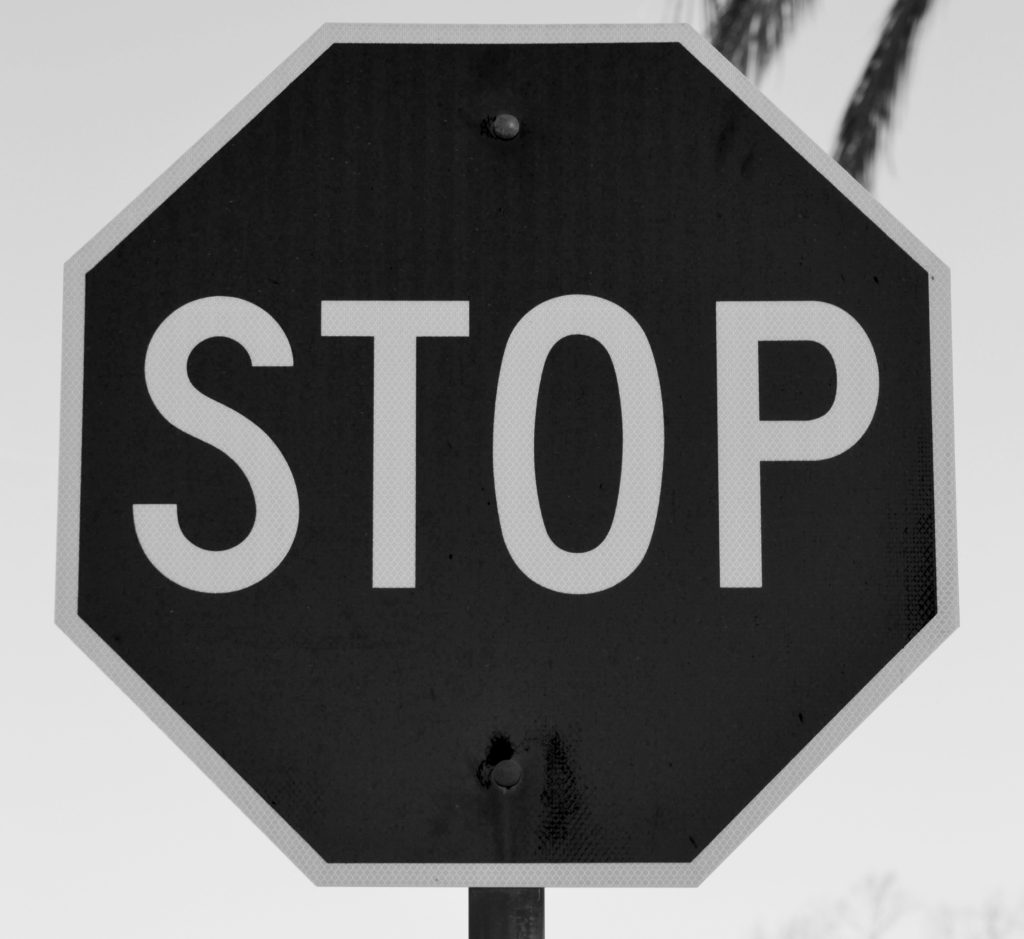 Helpful Strategies: - Step out of “what if” and step into “what is.” Picture a stop sign. Stop and ask “what is actually here right now, and can I be with this?” Name what is actually here right in this moment. Often it may be that you are in the comfort of your bed and nothing bad is actually happening in this very moment. Even if this moment may be difficult or challenging, focus on all of the resources you have to cope right now with what is here. For example, when I was driving to the ER not knowing if my husband would be OK, I focused on my wonderful support system of family and friends, the care and expertise of the doctors who were available to us, and on my meditation practice that grounds me. - If there is nothing “bad” actually happening in this moment, remember that you can choose to go into a different movie theater. Those worries are just mental constructs in your mind and nothing more. They are empty of substance. Remember that you can use your imagination to nourish yourself as much as to scare yourself. Create a new movie that is more nourishing. At night when my worries start to creep in, I like to picture myself in my safe and serene spot on the beach of a beautiful lake, surrounded by mountains, and amongst all of the spiritual teachers whose wisdom inspires and nourishes me. Create a movie that feels supportive for you – be creative and even playful with this. The Alarmist: With this variety of worry, the sympathetic nervous system goes into full blown activation and there is a very physiological experience of worry, in fight or flight fashion. Helpful Strategies: It can be most helpful with this kind of worry to focus on calming the nervous system. There is no one right way to do this. What is most important is that each person find what works best for them. Some helpful strategies can include: focusing on one’s breathing and in particular slowing down the exhalations to be longer than the inhalations; focusing on grounding practices such as bringing awareness to sensations of the feet on the ground, or the contact points of support underneath someone at the surfaces upon which they are resting; bringing awareness to any or all of the five senses and focusing on what one can see, hear, touch, etc.; putting one hand on the heart and one hand on the abdomen and offering words of care to oneself (e.g., “this is a moment of difficulty”). The Runaway Train: Sometimes the worrying mind can have a quality of a runaway train. We can get pulled away by mental ruminations — one worry thought leading to the next, leading to the next, often like dominoes falling with a kind of building momentum. We might start at point A, and within a matter of seconds or minutes, our mind can be at Z and beyond, even when these thoughts don’t make logical sense.
Helpful Strategies: - Step out of “what if” and step into “what is.” Picture a stop sign. Stop and ask “what is actually here right now, and can I be with this?” Name what is actually here right in this moment. Often it may be that you are in the comfort of your bed and nothing bad is actually happening in this very moment. Even if this moment may be difficult or challenging, focus on all of the resources you have to cope right now with what is here. For example, when I was driving to the ER not knowing if my husband would be OK, I focused on my wonderful support system of family and friends, the care and expertise of the doctors who were available to us, and on my meditation practice that grounds me. - If there is nothing “bad” actually happening in this moment, remember that you can choose to go into a different movie theater. Those worries are just mental constructs in your mind and nothing more. They are empty of substance. Remember that you can use your imagination to nourish yourself as much as to scare yourself. Create a new movie that is more nourishing. At night when my worries start to creep in, I like to picture myself in my safe and serene spot on the beach of a beautiful lake, surrounded by mountains, and amongst all of the spiritual teachers whose wisdom inspires and nourishes me. Create a movie that feels supportive for you – be creative and even playful with this. The Alarmist: With this variety of worry, the sympathetic nervous system goes into full blown activation and there is a very physiological experience of worry, in fight or flight fashion. Helpful Strategies: It can be most helpful with this kind of worry to focus on calming the nervous system. There is no one right way to do this. What is most important is that each person find what works best for them. Some helpful strategies can include: focusing on one’s breathing and in particular slowing down the exhalations to be longer than the inhalations; focusing on grounding practices such as bringing awareness to sensations of the feet on the ground, or the contact points of support underneath someone at the surfaces upon which they are resting; bringing awareness to any or all of the five senses and focusing on what one can see, hear, touch, etc.; putting one hand on the heart and one hand on the abdomen and offering words of care to oneself (e.g., “this is a moment of difficulty”). The Runaway Train: Sometimes the worrying mind can have a quality of a runaway train. We can get pulled away by mental ruminations — one worry thought leading to the next, leading to the next, often like dominoes falling with a kind of building momentum. We might start at point A, and within a matter of seconds or minutes, our mind can be at Z and beyond, even when these thoughts don’t make logical sense.  Mindful awareness and meditation practice can be very helpful here. First, you need to recognize that you are on the train. Once you see that, make the choice to step off the train at the very next stop, and watch this train, and the next, and next — as it passes by. Don’t worry about stopping the trains but try to observe them from the vantage point of solid ground. When we can observe our thoughts without getting hooked by them, when we can remember that our thoughts are just mental constructs and not absolute truth, this can help to stop the momentum of the worry thoughts in their tracks. With the challenges so many of us are facing in the world and in our personal lives, it is no wonder that many people are struggling with worries. If you are gripped by worries, you are not alone! But while having a worrying mind is part of our human condition, we are not helpless to our worries, and they don’t need to consume our lives. By remembering to “ACT” and by trying some of the strategies above, I hope you will find ways to experience greater ease and free up energy to engage in those things that you care most about.
Mindful awareness and meditation practice can be very helpful here. First, you need to recognize that you are on the train. Once you see that, make the choice to step off the train at the very next stop, and watch this train, and the next, and next — as it passes by. Don’t worry about stopping the trains but try to observe them from the vantage point of solid ground. When we can observe our thoughts without getting hooked by them, when we can remember that our thoughts are just mental constructs and not absolute truth, this can help to stop the momentum of the worry thoughts in their tracks. With the challenges so many of us are facing in the world and in our personal lives, it is no wonder that many people are struggling with worries. If you are gripped by worries, you are not alone! But while having a worrying mind is part of our human condition, we are not helpless to our worries, and they don’t need to consume our lives. By remembering to “ACT” and by trying some of the strategies above, I hope you will find ways to experience greater ease and free up energy to engage in those things that you care most about.
ABOUT THE AUTHOR
 Beth Kurland, Ph.D., is a clinical psychologist, Tedx speaker, and author of three award winning books: Dancing on The Tightrope: Transcending the Habits of Your Mind and Awakening to Your Fullest Life; The Transformative Power of Ten Minutes: An Eight Week Guide to Reducing Stress and Cultivating Well-Being and Gifts of the Rain Puddle: Poems, Meditations and Reflections for the Mindful Soul. Beth is passionate about teaching mindfulness informed practices and mind-body strategies to help people cultivate whole person health and well-being. She is excited to be teaching her online course The Well-Being Toolkit, and to offer online coaching services in addition to her therapy practice. Visit https://BethKurland.com to learn more. You can also find her free meditations on Insight Timer, and her blogs on Psychology Today
Beth Kurland, Ph.D., is a clinical psychologist, Tedx speaker, and author of three award winning books: Dancing on The Tightrope: Transcending the Habits of Your Mind and Awakening to Your Fullest Life; The Transformative Power of Ten Minutes: An Eight Week Guide to Reducing Stress and Cultivating Well-Being and Gifts of the Rain Puddle: Poems, Meditations and Reflections for the Mindful Soul. Beth is passionate about teaching mindfulness informed practices and mind-body strategies to help people cultivate whole person health and well-being. She is excited to be teaching her online course The Well-Being Toolkit, and to offer online coaching services in addition to her therapy practice. Visit https://BethKurland.com to learn more. You can also find her free meditations on Insight Timer, and her blogs on Psychology Today
Be Loyal to You
© 2022 Rick Hanson, PhD
Excerpted from Making Great Relationships: Simple Practices for Solving Conflicts, Building Cooperation, and Fostering Love (January 2023). Reprinted with permission from Penguin Random House.
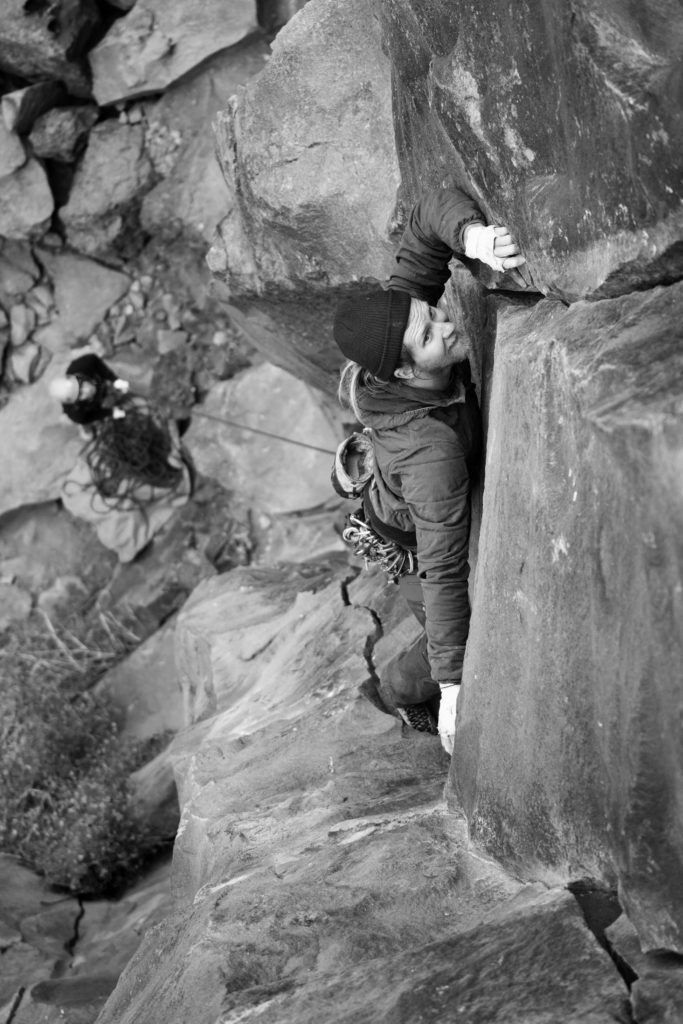
Some years ago my friend Norman and I were climbing a route on Fairview Dome in Yosemite Park. I finished leading a steep pitch, set anchors at a small ledge, and belayed Norman as he came up. Suddenly he popped off a hold and fell backward with his arms flung wide and a shocked expression. His weight yanked me downward but the anchors held and I braked his fall. He looked up with a bemused grin, jammed his hands back in the crack, and kept climbing.
He knew I’d catch his fall, and on another day I knew he’d catch mine. We were loyal to each other, although usually in less dramatic ways. We stayed alert for threats, listened with interest, appreciated wins, and sympathized with losses. He looked out for me and I for him.
Most of us are loyal to some other people. Yet how many of us are loyal to ourselves? How often do you give yourself the same kind of encouragement, support, and respect that you give to others?
In my experience, lots of people have trouble being loyal to themselves, at least in certain areas. Maybe they can stick up for themselves at work but in their personal relationships they feel that somehow they don’t have the right to be on their own side. As a therapist, I’d often meet someone who was pretty unhappy for understandable reasons given their life history and current relationships. But they downplayed or dismissed how they felt, like it was embarrassing or a personal fault. They kind of shrugged at their own pain. They could tell me what they thought they ought to do, but underneath it all they weren’t moved to help themselves actually do it. To move forward despite our inertia and fears, we need a dogged, loyal commitment to our own welfare.
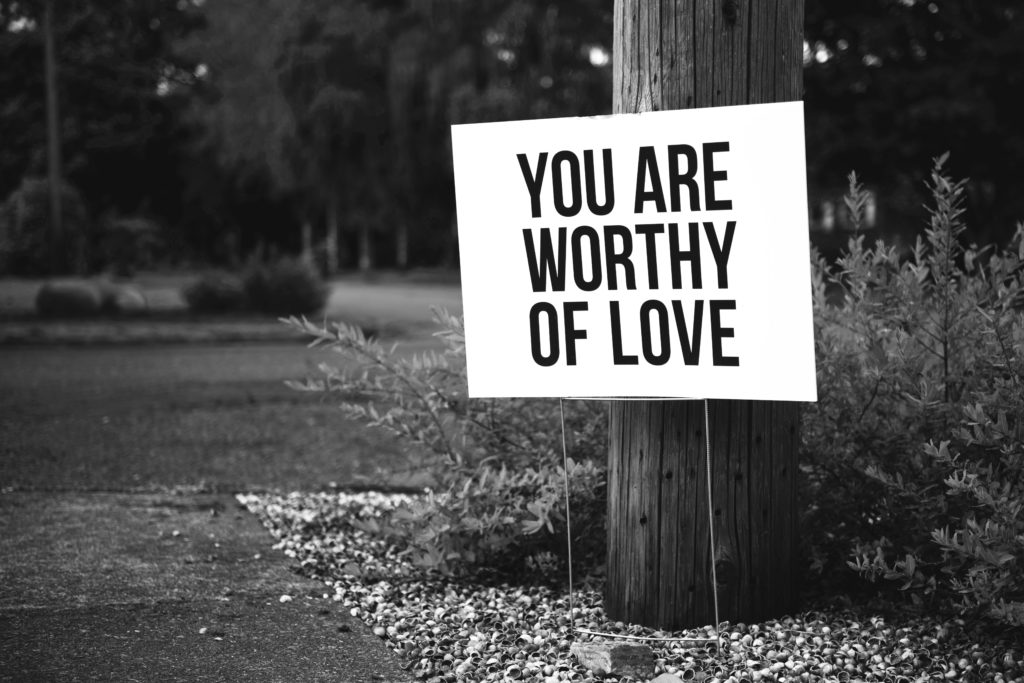
Being loyal to yourself is like being loyal to anyone else. You see the good in that person. You’re a faithful ally, both compassionate and supportive. This stance, applied to yourself, is the foundation of every good action you might take on your own behalf. It’s like a pilot light. If it’s unlit, no amount of “gas” – including the things we’ll explore that could improve your relationships – will make much difference. But when it’s lit, anything is possible. When you’re for yourself, your one wild and precious life – as Mary Oliver put it – matters to you.
Being loyal to yourself doesn’t mean being selfish. When you recognize what is truly best for you, you know that you must give in order to take, that you need to hold others in your heart for your own sake as well as theirs. Wise loyalty is clear-eyed, not blind. In order to help yourself, you need to understand what you could do better next time. (Perhaps in the spirit of Suzuki Roshi’s comment to a group of Zen students: “You are perfect as you are . . . and could use a little improvement.”) Wise loyalty to yourself sees the big picture and takes the long view – for example, helping you disengage from no-win quarrels with someone.
It feels really good when someone is loyal to you, and you can have much the same feeling when you’re loyal to yourself. Imagine what could shift for the better in your relationships if you were consistently committed to your deep true interests, if you gave yourself emotional support during conflicts, if you had a strong sense of the value of your life each day.
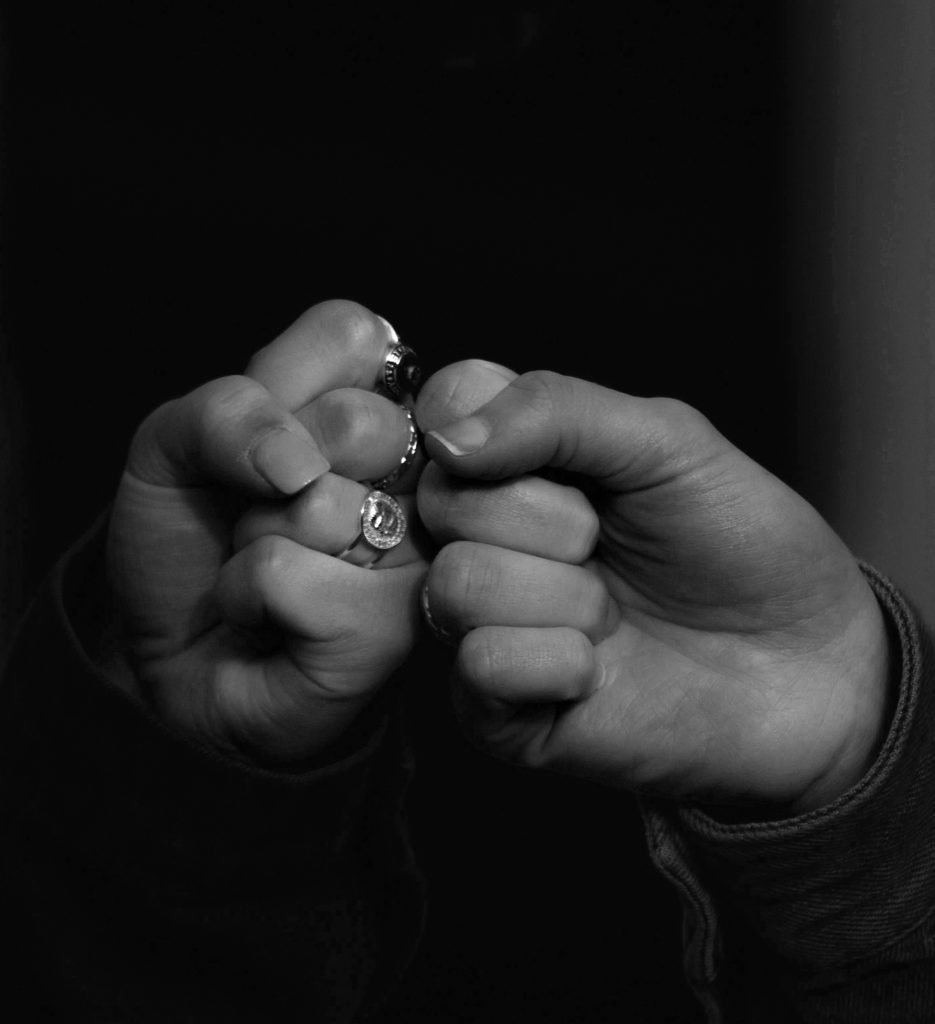
How
A good place to start is to bring to mind the sense of being loyal to someone you care about. What’s this experience like? There might be a feeling of warmhearted support and sturdy persistence on their behalf. There might be an awareness of that person’s inner being, with its vulnerability and preciousness. Know what it’s like to be loyal to someone
And then apply this attitude to yourself. You could imagine seeing that person and yourself seated in front of you, and say first to the other person and next to yourself “I am loyal to you . . . I am going to stick up for you . . . I think about what’s really best for you . . . Your life truly matters . . . “ What does it feel like to say these things? Are some easy to say to the other person, but hard to say to yourself? Next, try speaking as yourself and notice how that feels, such as: “I’m not against others, I’m simply for myself . . . My needs and wants matter . . . I’m determined to do what’s good for me even if it’s scary . . . “ You could make these general statements specific to particular issues, such as: “I am going to stick up for myself at work . . . My needs and wants matter in this family . . . I’m going to talk about that argument with my friend even if it’s scary . . . “ Be open to your intuition about what might be moving and important to tell yourself.
Dealing with Blocks
As you do this exercise, you’re exploring the depths of your own mind. Notice what you find there, especially any hesitations, any sense that you’re not allowed to do this, any feeling that you don’t deserve this kind of support. Blocks to self-loyalty are common, notably
- Beliefs that it’s somehow “against the rules,” that it’s selfish, unfair, or just wrong
- Shame, the feeling that you don’t deserve kindness and support, including from yourself
- A sense of futility, hopelessness and helplessness; “why bother since it won’t work out anyway?”
- Dismissiveness, indifference, even cruelty toward parts of yourself

In the pages to come, we’ll explore many ways to move through blocks like these. Just being aware of them is very helpful. You can be curious about them while not identifying with them. You can recognize where blocks have come from, such as your upbringing, or how other people have treated you. Because we are such social beings, we naturally internalize and do to ourselves what others have done, especially during childhood.
You can challenge beliefs that underpin blocks, with questions like: Is this actually true? How often does that really happen? If it’s all right for me to be loyal to others, and it’s all right for others to be loyal to me, why would it be wrong to be loyal to myself? You can tell yourself what’s true, such as: I couldn’t stop that bully in school, but today I am NOT helpless and can stand up for myself . . . What my uncle did was a shame on him, not me; I am NOT broken, tainted, or unworthy of love.
You can have a sense of disengaging from a block, no longer agreeing with it and reinforcing it, letting it fade, letting it go. Inside your mind, it’s “over there” while the core of you is separated from it. Try telling it that it no longer has power over you; try saying good-bye to it.
Strengthening Loyalty to Yourself
You can recall times that you were strong on your own behalf, perhaps once when you had to dig deep to get through a horrible situation or relationship. Try to get a sense, again, of what that strength felt like in order to reinforce it inside yourself. What did it feel like? What was the look in your eyes, the expression on your face? Appreciate the ways that you have been loyal to yourself, and recognize their benefits, such as helping you to say something important to one of your parents.
In the present, you can be in touch with the sense of being loyal to yourself. Explore it as you experience it, including the feeling of it in your body. Notice things that are meaningful and important for you in being on your own side. Enjoy it! Open to the sense of being for yourself, and let it sink in, all the way in.
You can make a sacred commitment to yourself that you won’t let yourself down. That you will keep faith with yourself. Not placing yourself above others, nor placing yourself beneath them. You can respect yourself, and stand by and for and with yourself at each step down the long road of life.
ABOUT THE AUTHOR

Rick Hanson, Ph.D. is a psychologist, Senior Fellow at UC Berkeley’s Greater Good Science Center, and New York Times best-selling author. His books have been published in 30 languages and include Making Great Relationships, Neurodharma, Resilient, Hardwiring Happiness, Just One Thing, Buddha’s Brain, and Mother Nurture – with over a million copies in English alone. His free newsletters have 250,000 subscribers and his online programs have scholarships available with the help of casino utan spelpaus for those with financial needs. He’s lectured at NASA, Google, Oxford, and Harvard, and taught in meditation centers worldwide. An expert on positive neuroplasticity, his work has been featured on CBS, NPR, the BBC, and other major media. He began meditating in 1974 and is the founder of the Wellspring Institute for Neuroscience and Contemplative Wisdom. He and his wife live in northern California and have two adult children. He loves wilderness and taking a break from emails.
Lookin’
Lookin’
© 2021 Tom Bowlin
Never Learned
To lookDown the road
FinallyLearned
To lookInside
ABOUT THE AUTHOR
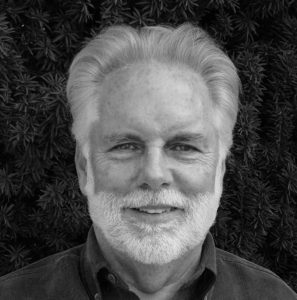
Tom Bowlin writes about what life is like for us, what's been done to us, what we do to each other, and what we just think sometimes. Tom lost his son at an early age and many of his poems are about loss and the hard times we all experience. His poems don't always reflect his personal beliefs, instead he views them as short stories about "us." His 2 poetry books are Us and Love and Loss.
Unleashing the Power of Respect: The I-M Approach
© 2022 Dr. Joseph Shrand
The origin of the I-M Approach
Let me flashback to 1982. I had graduated two years earlier from Sarah Lawrence College with a BA in Liberal Arts. But I decided I wanted to be a physician. I began to pursue my pre-med requirements.
I was taking physics. (Still awake? I find that people suddenly fall asleep when I mention the word physics.) Anyway, in ph***cs, the symbol “I” stands for a potential current, for electricity. But I wondered what would happen if we turned the “I” upside-down; still an “I” but now a “current potential.” Current—right now—but with the potential to change in the very next second to another current potential. Influenced by Charles Darwin and the idea that animals were always trying to succeed, every one of those current potentials was actually a maximum current potential. At every moment in time, we are doing the best we can, but with the potential to change in the very next second to another “best we can.” I named that current maximum potential an I-max, which I have since changed to be represented by I-M.

I-M has several acronym meanings: Is Me; I Matter; I Am; Inner Mind; Inner Me. Many acronyms, but each depicting a paradigm shift. Instead of seeing ourselves as doing “less than,” I-M sees us as always doing the “best we can, with the potential to change.” I-M always changing.
Instead of worrying you have less value, the I-M Approach says you are doing the best you can, but if you don’t like what you do, you can change, adapt, evolve. The I-M Approach helps you understand why you do what you do, based on the influence of the Four Domains.
Our I-M is influenced by Four Domains
Your I-M is always changing, adapting, evolving, influenced by, and responding to Four Domains:
- Your Home Domain
- Your Social Domain
- Your Biological Domain (of your brain and body)
- Your Ic Domain (how you see yourself, and how you think others see you)

The interaction of the Four Domains is captured in the above graphic. The double-headed arrows convey that the domains influence each other all the time. And the result is your I-M: Dynamic, changing, adapting, and evolving. Responding the best you can, with the potential to respond and change again in the very next second to another I-M.
The Home Domain
No one is going to argue that your home has had an influence on who you are today. The Home Domain is where connections to other people first begins; the importance of our family, and the influences of that environment. The Home Domain is distinguished from the rest of the world—the Social Domain.
The Social Domain
The Social Domain is being at work, or at school, going to a movie, walking down the street; anything other than the Home Domain. Things that happen at home influence the choices you make in the rest of the world. And things that happen in the Social Domain influence the choices you make at home. These two domains of Home and Social are outside of, but connect with, the two internal domains.
The Biological Domain
The Biological Domain is your brain and body. Are you hungry? Are you tired? Are you digesting your lunch? Are you on medicine or fighting off a cold? We are a collection of cells that are always changing, responding to the world inside and out. Sometimes these changes are part of growth and development, like brain-maturation, growing bones, or sexual development.
Sometimes the change in our brain and body may be due to genes that are turned on or off at this moment in time. Perhaps the changes are in response to what food we eat, how much exercise we get, how much stress we feel, or how happy we are going to work or coming home. Changing the environment of the cell changes its response. No one is sick or broken: we are simply responding the best we can, our I-M.

Th Ic Domain
Pronounced “I see,” the Ic Domain is our current concept of self: how I see myself and how I think other people see me. Human beings, as social animals, are very interested in what other people think or feel. But we are especially interested in what they think or feel about us. In particular: do they see me as valuable?
Our Ic Domain is driven by a powerful brain tool called “theory of mind.” This clunky scientific term is not like theory of relativity, or theory of evolution. We can’t see someone else’s mind, so we have to guess, “theorize” what they are thinking or feeling. It is given a separate domain from the Biological Domain, just as the Home Domain is parsed out from the Social Domain. Theory of mind is the foundation of every human social interaction. The root of empathy: our ability to appreciate what other people think and feel, and the brain tool we use to guess what other people think and feel about us.

We use our Ic Domain all the time in every single interaction. Have you ever been to a job interview? Why do you wear certain clothes and not your pajamas during the interview? Because you care what other people think about you. When you are trying to attract someone romantically, do you brush your teeth and comb your hair or dress like a slob? You try to present yourself a certain way so you can influence someone else’s response. You want them to like you, to respect you, to value you, to trust you. The Ic Domain is where all these things are happening.
Everyone is at an I-M
Everyone is at an I-M, doing the best they can at this moment in time with the potential to change in the very next second to another best they can, another I-M. The I-M Approach is not saying that your current I-M is the best you will ever do. You don’t have to like your I-M or condone it. Just because it is the best you can do at that moment does not mean your I-M is a free ride: you will be held responsible for your I-M, because everything you do has a natural consequence. But responsibility is different than blame. Blame is shaming. Responsibility is empowering.
Your I-M doesn’t even mean you will win and be successful. For some people, success is when you love going to work and love going home. For some, success is having enough food in the refrigerator. For some, success is just having a home to have a refrigerator. And for some, success is merely waking up and getting though the day. We all get to decide what success means to us.
But instead of judging ourselves as “less than” and broken, as not doing as well as we could, as “should be doing better,” as sick, diseased, or disordered, let’s look again at why we do what we do based on the influence of the Four Domains.

Think about these words: “look again.” Turn them around: “again look.” Again—as in to repeat something. Look—as in being a spectator. The I-M Approach says let’s respect why we do what we do. Without judgement. Simply recognizing the influence of the Four Domains. The I-M Approach is a position of respect.
When is the last time you got angry at someone treating you with respect?
Never.
Anger is an emotion designed to change things. We get angry at people when we want someone to do something different: to stop doing something or start doing something.
But being respected feels great, so we do not get angry. Why would we want to change that?
The brain does not activate anger when it feels respected. This principle has the same reliability as gravity: apples don’t fall up, and the brain does not activate anger when it feels respected.
Respect leads to value. Think about every person you know. They all want the same thing: simply to feel valued by somebody else. This need for being valued is the common thread that binds us all. And what’s cool is, at any and every moment, you can remind someone of their value. And whenever you remind someone of their value, you increase your own value.
Respect leads to value, and value leads to trust. Trust is the antidote to fear, and anger, and sadness, because when you trust someone, you can make a mistake and know you will not be seen as less valuable. The I-M Approach allows you to unleash your unlimited human potential, your wonder, your creativity. It unleashes the power of respect.
The Two Truths of the I-M Approach
Truth #1:SMALL CHANGES CAN HAVE BIG EFFECTS
Because the Four Domains are so connected and interactive, a small change in one domain can have an amplified and ripple effect in the others. You don’t need to change everything. If you think you have to change everything, you can become overwhelmed. If you’re overwhelmed, your Biological Domain can feel angry, anxious, or sad—which will then affect the other domains. Relax. Small changes can have big effects.
The Two Truths of the I-M Approach
Truth #2:YOU CONTROL NO ONE BUT INFLUENCE EVERYONE
The second truth is even more powerful. Everyone has an I-M. We are all interested, through our Ic Domain, about what others think and feel about us. You are part of someone’s Home or Social Domain. You have an effect on their Biological Domain, through their Ic Domain, because you know it feels different when someone says you are amazing or says you suck—when you are treated with respect or not. This means that you control no one but influence everyone. You get to choose the kind of influence you want to be.

Applying the I-M Approach
You can use the I-M Approach right now to explore who you are and why you do what you do, based on the influence of the Four Domains. The I-M is a roadmap: What small change can you make in any one of the domains that can have a ripple effect through the entire system, so you can move to another I-M?
If you are a business owner, you can use the I-M to enhance your product: what small change can you make to move your company, and all of your employees, to a different I-M? If you are a teacher, you can use the I-M to structure your classroom: what small change can you make to move your students to a different I-M? If you are a politician, what small change can your constituents make to move your entire district to a different I-M? If you are a clinician, you and your patient can use the I-M to structure a change plan: what small change can they make to move to a different I-M? If you are a parent, what small change can you make to move your family to a different I-M? Every one of those small changes you make has an influence on someone else.
Everyone wants the same thing: to simply feel valued by somebody else. Using the I-M Approach, seeing ourselves and each other as doing the best we can instead of less than we can, at any and every moment in time you can remind someone of their value. And every time you remind someone of their value, you increase your own value. And everyone wants to feel valuable. You get to choose the kind of influence you want to be.
You are at an I-M. When you view yourself this way, you can wonder instead of worry. With this small change in perception, you are already moving yourself to a different I-M.

Practice Respect
Remember a time when you were sad? Had something happened at home or in the Social Domain? Did it have an influence on the way you saw yourself, which then influenced the way you felt? What about a time when you were scared . . . happy . . . angry?
Now use the I-M Domains to reflect on a time you made someone else feel sad, or happy, or angry or scared. Perhaps it was confusing why the person responded the way they did, but the Four Domains are a roadmap to help you tease apart the chaos of life, every time.
The more you use the I-M Approach, the better you become at it. Next time you feel nervous about going on a first date or applying for a job, you can use the I-M Approach. First, you can recognize your Biological Domain response: you feel reflexively anxious and scared. Why? Because your Ic Domain fears you will be seen as less-than, with less value. Even being afraid is an I-M. But if you don’t like it, you can change it. You can be more confident, recognizing that everyone has an I-M, and if the best that other person can do is reject you, what’s going on in their Four Domains? You can remind yourself of your value, which will lead you to trust yourself, and decide what you want to do from a position of being the best you can instead of being less than you can. You remind yourself of your value by respecting who you are and why you do what you do.
ABOUT THE AUTHOR

Dr. Joseph Shrand is Chief Medical Officer of Riverside Community Care headquartered in Dedham, Mass. He has been a Lecturer of Psychiatry at Harvard Medical School, and an adjunct Faculty of Boston Children's Hospital. He is triple Board certified in adult psychiatry, child and adolescent psychiatry, and a diplomate of the American Board of Addiction Medicine. Dr. Shrand hosts a weekly radio show on WATD 95.9 FM, The Dr. Joe Show: Exploring who we are and why we do what we do. His newest book is "Unleashing the Power of Respect: The I-M Approach." Among colleagues and staff, he is affectionately called “Doctor Joe,” as he was “Joe” in the original children’s cast of the PBS series “Zoom.” Find out more about him at https://www.drshrand.com/.
Perspectives on Self-Care
Be careful with all self-help methods (including those presented in this Bulletin), which are no substitute for working with a licensed healthcare practitioner. People vary, and what works for someone else may not be a good fit for you. When you try something, start slowly and carefully, and stop immediately if it feels bad or makes things worse.
Skillful Means: Ecotherapy
Your Skillful Means, sponsored by the Wellspring Institute, is designed to be a comprehensive resource for people interested in personal growth, overcoming inner obstacles, being helpful to others, and expanding consciousness. It includes instructions in everything from common psychological tools for dealing with negative self talk, to physical exercises for opening the body and clearing the mind, to meditation techniques for clarifying inner experience and connecting to deeper aspects of awareness, and much more.
Nature Walks / Ecotherapy

PURPOSE/EFFECTS
A walk in nature brings us a serenity by allowing our overstimulated modern minds a chance to rest. It helps us to relax, it lowers our stress, depression, and anxiety levels, it increases our attention spans and memory, and it provides a source of gentle exercise. Spending time in the natural world slows us down and makes us feel at peace; thus nature walks can be very effective as a supplemental therapy for addiction, AD(H)D, anxiety, and high levels of stress.
METHOD
Summary
Find a quiet, natural area and go on a walk.
Long Version
1. If you live near a national park or can take a long weekend to go to one, they are excellent places to begin due to their prolific natural beauty. Otherwise, find a wooded area near you, even if it's a city park or a flood plain in the suburbs.
2. Prepare yourself by wearing comfortable clothes that protect you from sun and brambles. Be sure to wear comfortable walking shoes; walking is as beneficial to the mind as nature. If you will be in a more secluded or wild area, prepare yourself appropriately.
3. Go to the natural place: the more quiet and peaceful, the better. Try not to go for an intensive hike unless you are quite physically fit; you aren’t looking for a workout that might disturb your sense of calm serenity.
4. Walk slowly and with relaxed alertness. One of the beneficial aspects of the nature walk is that it engages your attention in a peaceful way, without demanding it in the way that a walk through a busy city might.
5. Breathe deeply and comfortably, smelling the fresh air. Immerse yourself in the sights and sounds of the natural world, and take it all in without overthinking or overprocessing. Enjoy the greenness of the trees, the swaying of plant life in the wind, the singing of the birds. If you see something particularly interesting, allow yourself to appreciate it gently.
6. Let the sense of lovingkindness that nature gives us fill you with each breath. If you feel it is appropriate, you might want to give gentle thanks quietly for the beauty of the world and its serene stillness.
7. Walk for as long as you like.
HISTORY
Retreating into nature has long been used to clear the mind. Henry David Thoreau famously went to Walden Pond to "live deliberately" to learn "what it had to teach." John Muir, who helped develop the national park system in the US, called natural areas "places for rest, inspiration, and prayers" and encouraged those who lived in cities to take time in nature for spiritual and emotional renewal. The Buddha spoke of the natural world's beauty as a great source for spiritual joy, and St. Francis of Assisi used its beauty as evidence of the glory and benevolence of God.
CAUTIONS
If walking in genuine wilderness, or in an area with dangerous wildlife or terrain, take all the precautions necessary for any sensible hiker. Make sure somebody knows where you are. Try to avoid long walks in excessively hot or cold weather, especially in secluded areas. Bring water and give any wild animals a wide berth. Do not walk alone after dark!
NOTES
Some people find organized nature retreats especially helpful to galvanize mental and spiritual renewal. You can find a nature retreat organization near you online that provides guided ecotherapeutic walks or psychologically- and spiritually-oriented camping trips.
SEE ALSO
Physical Exercise Earth Descent Meditation - a meditative technique that uses nature as inspiration Walking Meditation
EXTERNAL LINKS
A New York Times article on nature walks for AD(H)D Short term memory improved by nature walks The sad and inspiring story of Steve Fugate and Trail Therapy
Fare Well
May you and all beings be happy, loving, and wise
The Wellspring Institute
For Neuroscience and Contemplative Wisdom
The Institute is a 501c3 non-profit corporation, and it publishes the Wise Brain Bulletin. The Wellspring Institute gathers, organizes, and freely offers information and methods – supported by brain science and the contemplative disciplines – for greater happiness, love, effectiveness, and wisdom. For more information about the Institute, please go to wisebrain.org/wellspring-institute.
If you enjoy receiving the Wise Brain Bulletin, please consider making a tax-deductible donation to the Wellspring Institute. Simply visit WiseBrain.org and click on the Donate button. We thank you.

